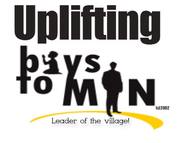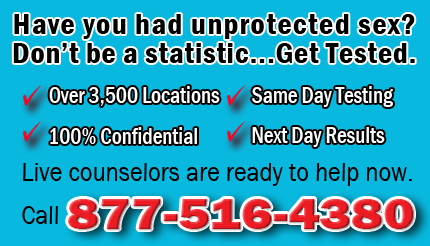STD/HIV Awareness Program

NATIONAL YOUTH HIV & AIDS AWARENESS DAY – APRIL 10Today's young people are the first generation that has never known a world without HIV and AIDS. In the United States, almost 40 percent of new HIV infections are young people ages 13 to 29. Despite this harsh reality, young people and their allies are determined to end this pandemic once and for all.
It’s more important than ever to recommit to the fight against HIV and AIDS. We must continue to invest in scientific advancements like a vaccine and a cure - without forgetting the importance of prevention strategies and ensuring equal access to information and healthcare for everyone.
And most importantly, we must invest in young people - bring them to the table not only as partners, but as leaders that can truly turn the tide of the HIV and AIDS epidemic. Only by fully investing in young people - in their health, their education, and their leadership - can we reach an AIDS-free generation.
WHY A NATIONAL YOUTH HIV AND AIDS AWARENESS DAY?The creation of NYHAAD is a step toward acknowledging and addressing the needs of young people in the HIV and AIDS response. Each year, young activists in high schools and at colleges and universities across the country will use this day to organize and educate about HIV and AIDS. They will promote HIV testing, fight stigma, and start the necessary conversation we need to deal honestly and effectively with the challenges we face. NYHAAD will also provide a yearly date for all of us to hold our leaders responsible to their commitments and invest in realizing an AIDS-free generation.
WHAT CAN I DO? Click here to add your name in support of National Youth HIV & AIDS Day. Together, we can make sure that the needs – and voices – of young people are central to the U.S. response to HIV & AIDS.
It’s more important than ever to recommit to the fight against HIV and AIDS. We must continue to invest in scientific advancements like a vaccine and a cure - without forgetting the importance of prevention strategies and ensuring equal access to information and healthcare for everyone.
And most importantly, we must invest in young people - bring them to the table not only as partners, but as leaders that can truly turn the tide of the HIV and AIDS epidemic. Only by fully investing in young people - in their health, their education, and their leadership - can we reach an AIDS-free generation.
WHY A NATIONAL YOUTH HIV AND AIDS AWARENESS DAY?The creation of NYHAAD is a step toward acknowledging and addressing the needs of young people in the HIV and AIDS response. Each year, young activists in high schools and at colleges and universities across the country will use this day to organize and educate about HIV and AIDS. They will promote HIV testing, fight stigma, and start the necessary conversation we need to deal honestly and effectively with the challenges we face. NYHAAD will also provide a yearly date for all of us to hold our leaders responsible to their commitments and invest in realizing an AIDS-free generation.
WHAT CAN I DO? Click here to add your name in support of National Youth HIV & AIDS Day. Together, we can make sure that the needs – and voices – of young people are central to the U.S. response to HIV & AIDS.
Sexually Transmitted Diseases (STD)
|
Gonorrhea
In 2014, 55.4% of all reported cases of gonorrhea occurred among blacks. The rate of gonorrhea among blacks in 2014 was 405.4 cases per 100,000 population, which was 10.6 times the rate among whites (38.3). This disparity has changed little in recent years. This disparity was similar for black men (10.6 times) and black women (10.7 times). Syphilis During 2010–2014, the rate of primary and secondary (P&S) syphilis among blacks increased 7.8% (from 17.8 to 119.2 cases per 100,000 population). In 2014, 38.1% of all cases reported to CDC were among blacks. The overall 2014 rate for blacks was 5.4 times the rate for whites, while the 2013 rate was 5.6 times the rate for whites. In 2014, the rate of P&S syphilis among black men was 5.3 times the rate among white men; the rate among black women was 9.2 times the rate among white women. In 2014, the rate of congenital syphilis was 38.2 cases per 100,000 live births among blacks. Race/ethnicity for cases of congenital syphilis is based on the mother’s race/ethnicity. This rate was 10.3 times the rate among whites (3.7 cases per 100,000 live births). |
Chlamydia
In 2014, the overall rate among blacks in the United States was 1,117.9 cases per 100,000, a 6.2% decrease from the 2010 rate of 1,167.5 cases per 100,000. The rate of chlamydia among black women was 5.7 times the rate among white women (1,432.6 and 253.3 per 100,000 women, respectively). The chlamydia rate among black men was 7.3 times the rate among white men (772.0 and 105.5 cases per 100,000 men, respectively). |



